THIS CONTENT IS BROUGHT TO YOU BY NIBIO - Norwegian Institute of Bioeconomy Research - read more
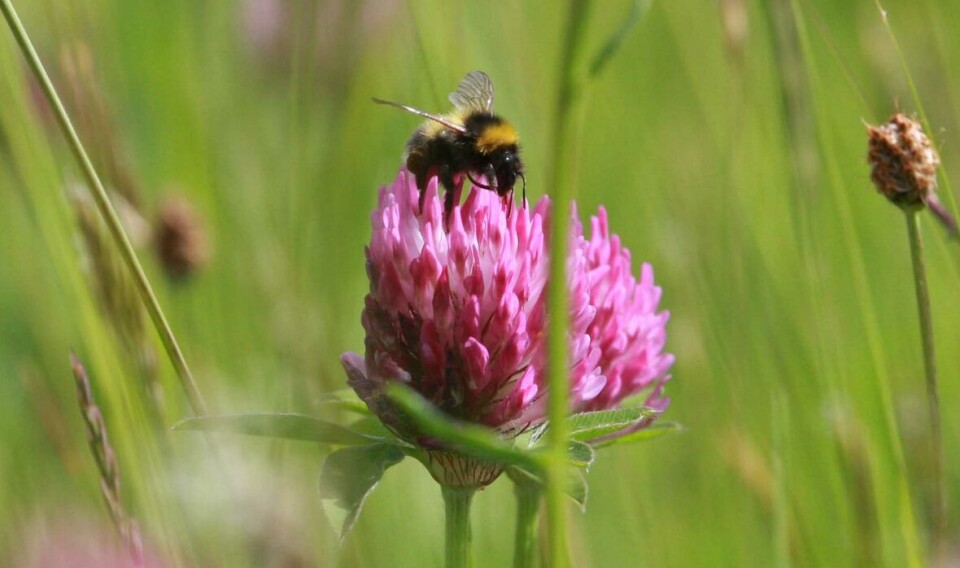
Pollinators' 10 favourite Nordic plants
From spring to fall, pollinators sip nectar from various flowers while carrying pollen from one bloom to another. But which flowers do they prefer?
Some pollinators, like small wild bees and hoverflies, have short tongues. They therefore prefer to drink nectar from open flowers with short corolla tubes, such as tormentil and bulbous buttercup.
Many bumblebees have long tongues and prefer flowers with deep corolla tubes, such as red clover and white clover.
Some flowers are more popular among pollinators because they have more pollen or nectar.
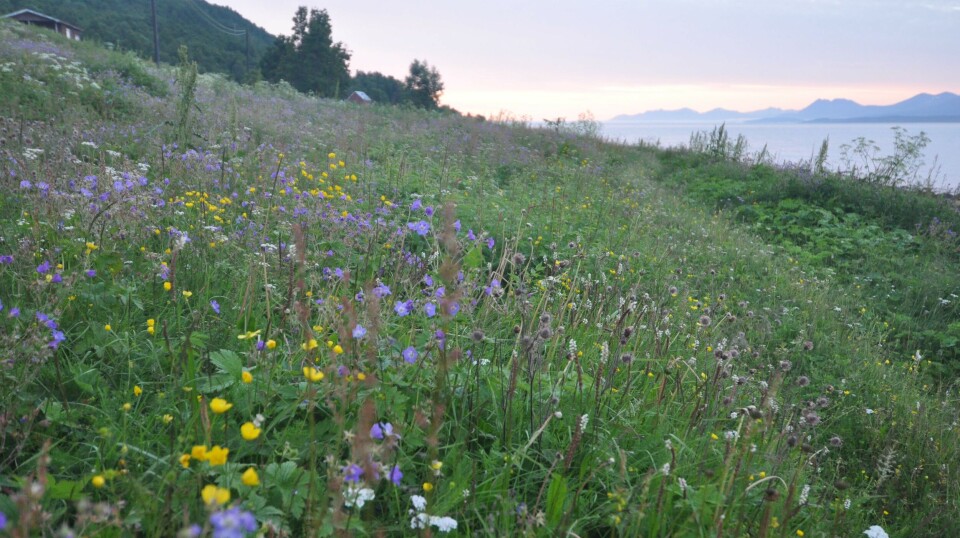
A team of researchers have investigated how urbanisation affects wild pollinators and plants in the city.
The goal has been to provide a basis for better preservation of biodiversity in urban planning.
“In this context, we've examined which plants wild bees and hoverflies prefer in semi-natural meadows and roadsides in Trondheim. It was clear from our recordings that pollinators have different preferences,” says Line Johansen.
She is the project manager and a researcher at NIBIO.
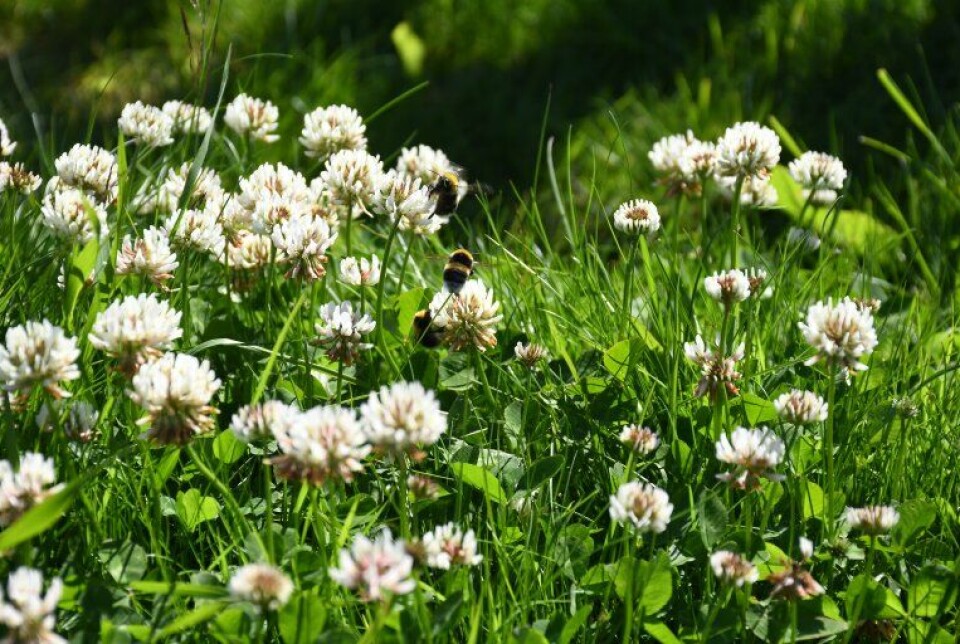
Common, but increasingly more rare
Researchers have highlighted ten plants that attract many pollinators.
All these ten plants are commonly found throughout much of Norway. However, in the modern cultivated landscape, areas with a great diversity of flowers can be few and far between.
“This means it's important to preserve the flowers that already exist in the landscape while also creating more flower-rich areas,” says Johansen.
She explains that this can be done by maintaining the flower-rich areas in semi-natural meadows and roadsides. It can also be as simple as not mowing flowering parts of the lawn – especially in cities where nature is limited in space.
Top ten plants for pollinators (in random order):
1. Devil's-bit scabious (Succisa pratensis) blooms late in the season, at a time when many other plants have finished flowering. Consequently, it attracts numerous pollinators.
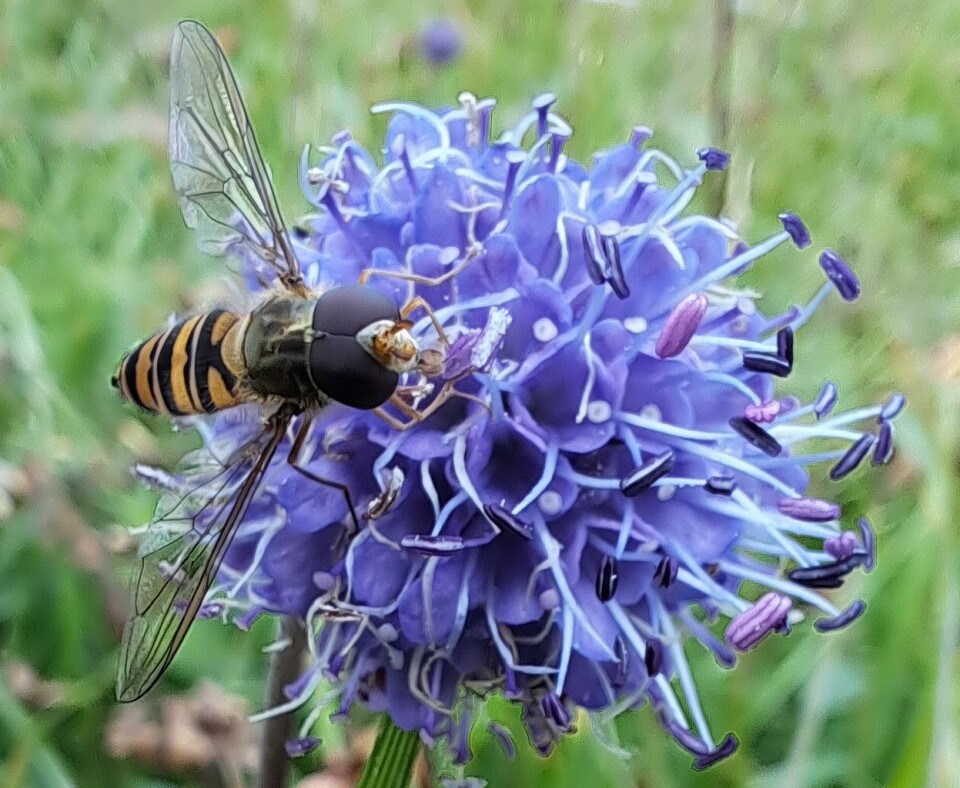
In addition to semi-natural meadows and roadsides, devil's-bit scabious grows in coastal heathland, open woodland, marshes, and coastal cliffs.
Devil's-bit scabious is particularly favoured by hoverflies, but bumblebees also visit it frequently.
2. Meadow buttercup (Ranunculus acris) blooms from May to September, providing food for pollinators throughout most of the growing season.

Meadow buttercup has an open flower that is particularly attractive to hoverflies and other insects with short tongues.
3. Imperforate St. John's wort (Hypericum maculatum) blooms from July to September.
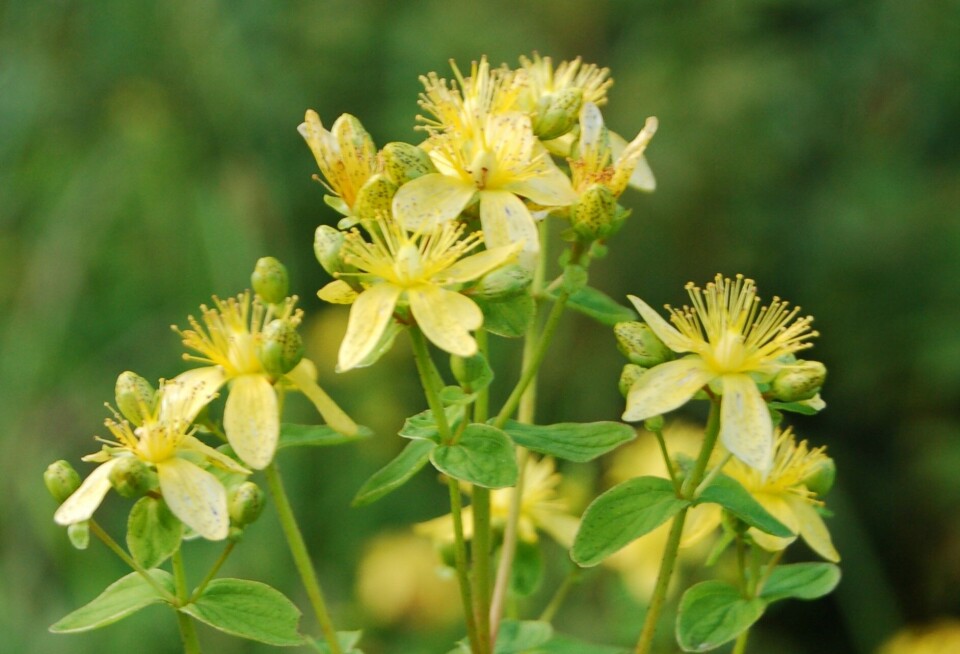
It produces no nectar, yet it remains popular among hoverflies that collect pollen from the plant.
4. Autumn hawkbit (Scorzoneroides autumnalis) blooms from July to October. It is highly favoured by both bees and hoverflies, especially late in the season when few other species are in bloom.
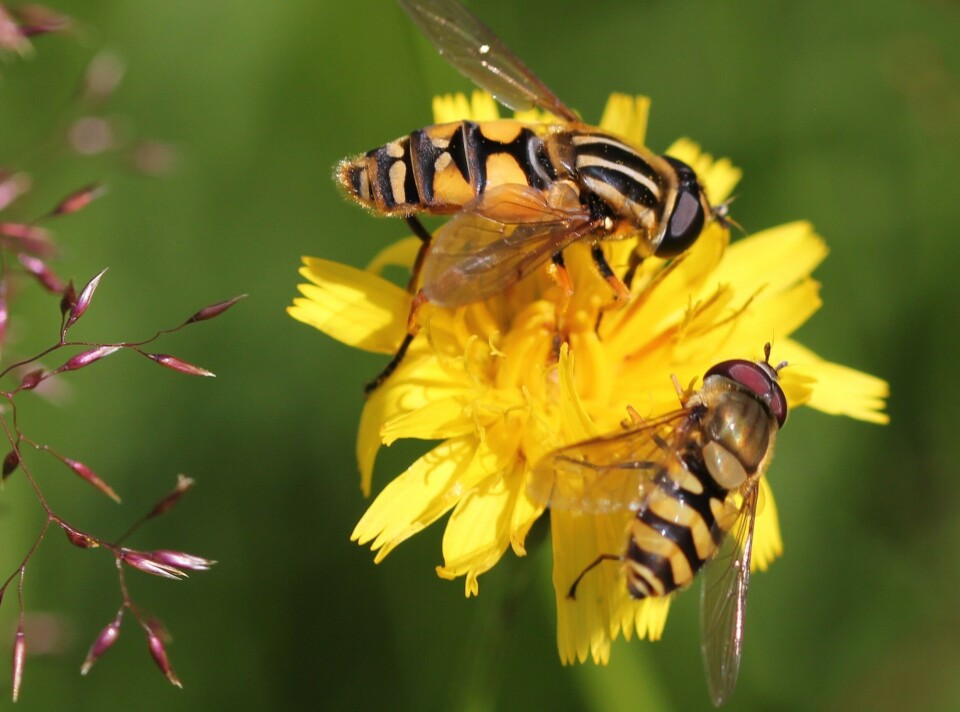
Autumn hawkbit has an open flower where nectar is readily accessible to pollinators. It grows in semi-natural meadows, roadsides, forests, and coastal meadows.
5. Common starwort (Stellaria graminea) blooms from June to September. It can have many flowers in a small area.

The plant is slender and is therefore most often visited by small and light pollinators, such as hoverflies and other wild bees.
6. White clover (Trifolium repens) has a long flowering period from June to September, making it important for pollinators throughout the season.
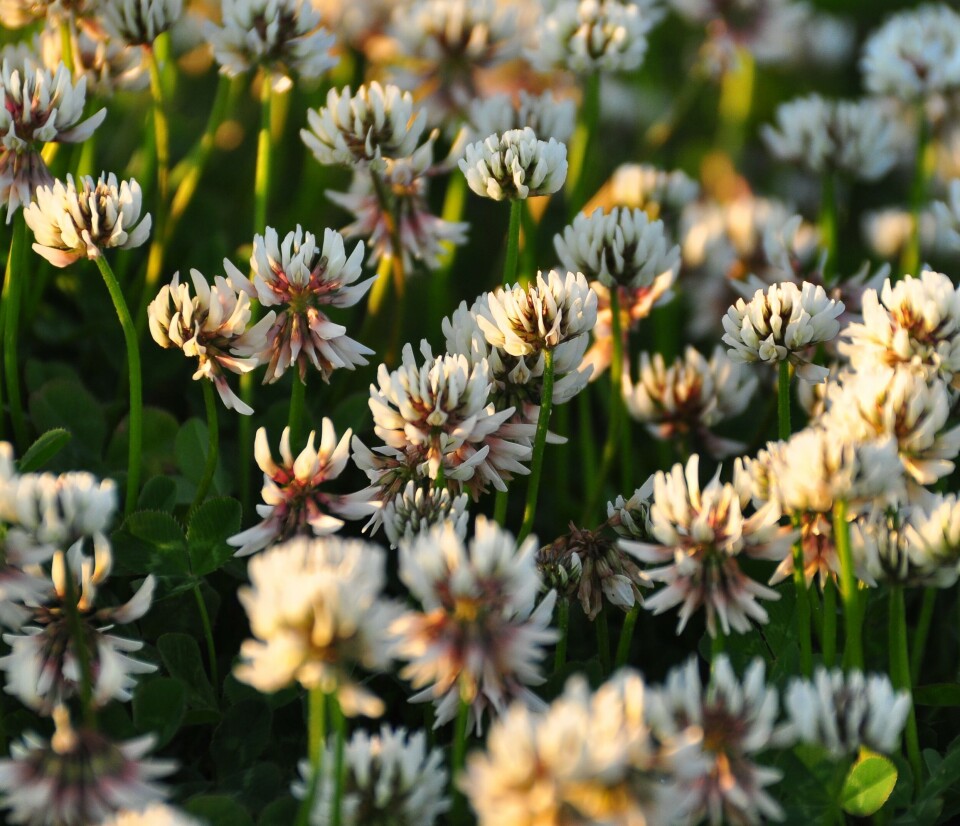
White clover has flowers consisting of long corolla tubes where the nectar is collected at the bottom. Bumblebees, with their long tongues, are experts at reaching the nectar.
7. Red clover (Trifolium pratense) has a long flowering period from May to September, making it important for pollinators throughout the season.
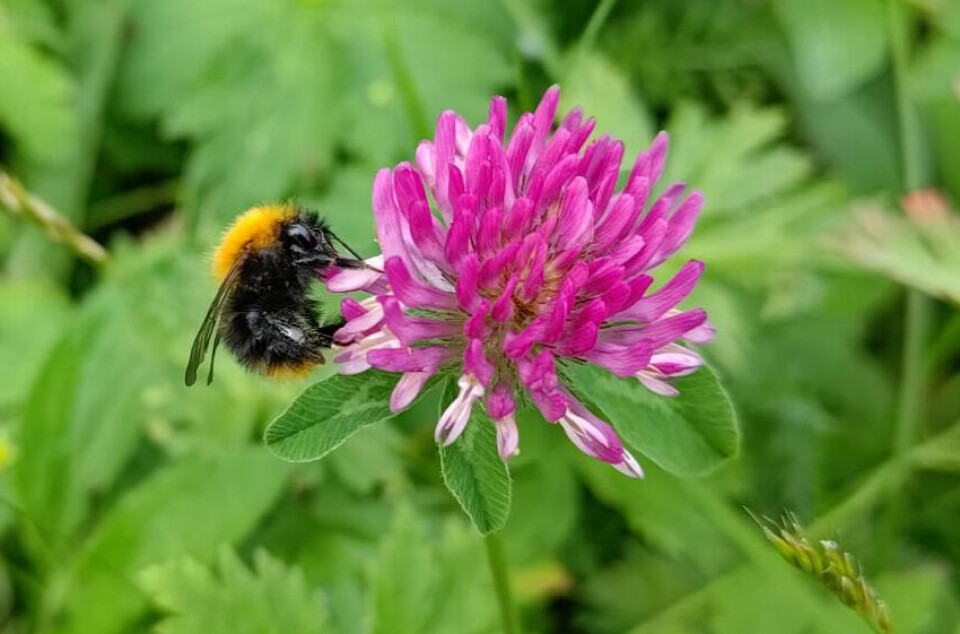
Like white clover, the flowers of red clover have especially long corolla tubes where the nectar is collected at the bottom. It therefore often attracts bumblebees with the longest tongues, such as garden bumblebees.
Red clover grows in semi-natural meadows, cultivated fields, forest edges, and roadside edges. The plant is often sown in meadows.
8. Field scabious (Knautia arvensis) blooms in the middle of summer, from the end of June until August.
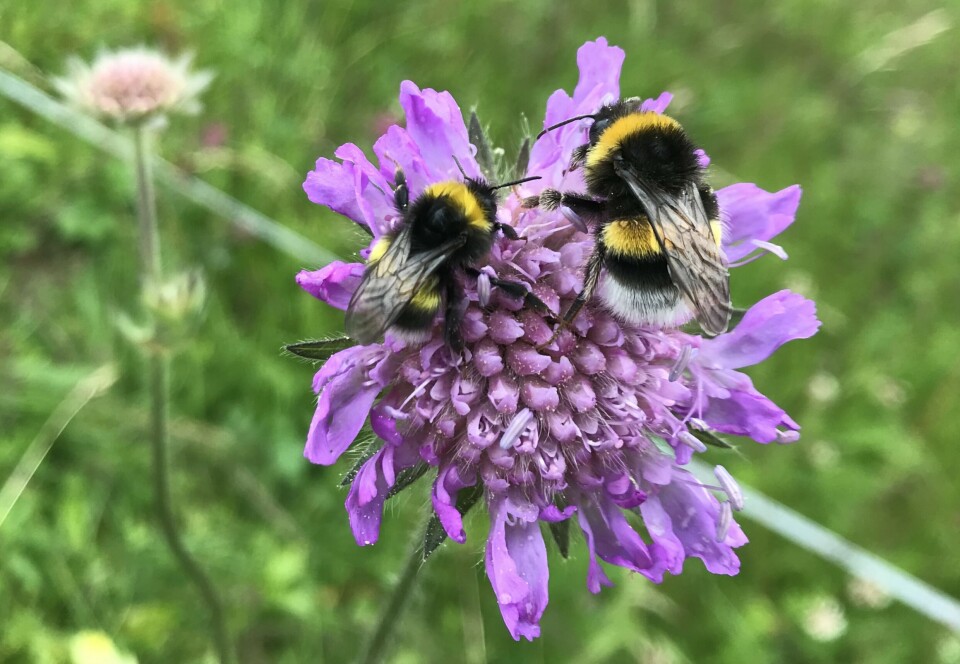
Field scabious is especially popular among bumblebees as the plant has a large flower where several bumblebees can gather nectar and rest at the same time.
The plant is commonly found in semi-natural meadows, but it also grows on roadside edges and dry slopes.
9. Wood cranesbill (Geranium sylvaticum) blooms from May to July. It is therefore an important resource for pollinators in the first part of the season.
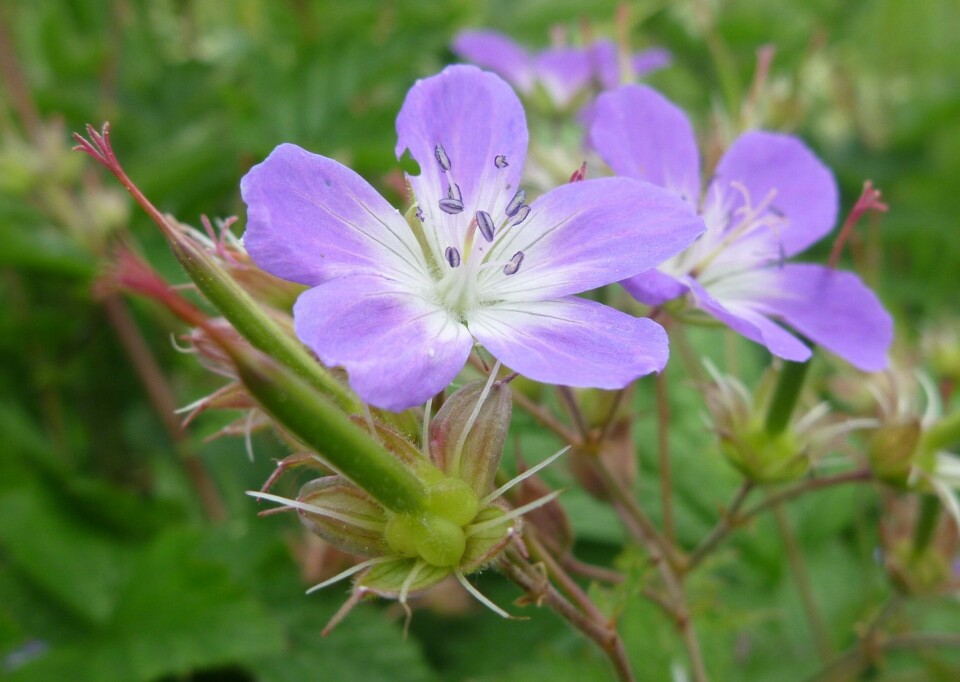
The flower of the wood cranesbill is especially attractive to bumblebees but is also visited by hoverflies and some wild bees.
Wood cranesbill grows in semi-natural meadows, roadside edges, and forests.
10. Tormentil (Potentilla erecta) blooms from June to August.

The plant has an open flower where the nectar is easily accessible for hoverflies and other small pollinators.
Tormentil grows in semi-natural meadows, heathlands, forests, and bogs.

This content is paid for and presented by NIBIO - Norwegian Institute of Bioeconomy Research
This content is created by NIBIO's communication staff, who use this platform to communicate science and share results from research with the public. NIBIO is one of more than 80 owners of ScienceNorway.no. Read more here.
More content from NIBIO:
-
This colourful bird is thriving in Norway
-
Can drone-mounted tree planting replace manual tree planting?
-
Light traps can tell us more about nocturnal moths
-
Climate change and land use threaten Sámi reindeer husbandry
-
Researchers are now going to monitor carbon in forest and grassland soils
-
Nine facts about Norwegian agriculture





































